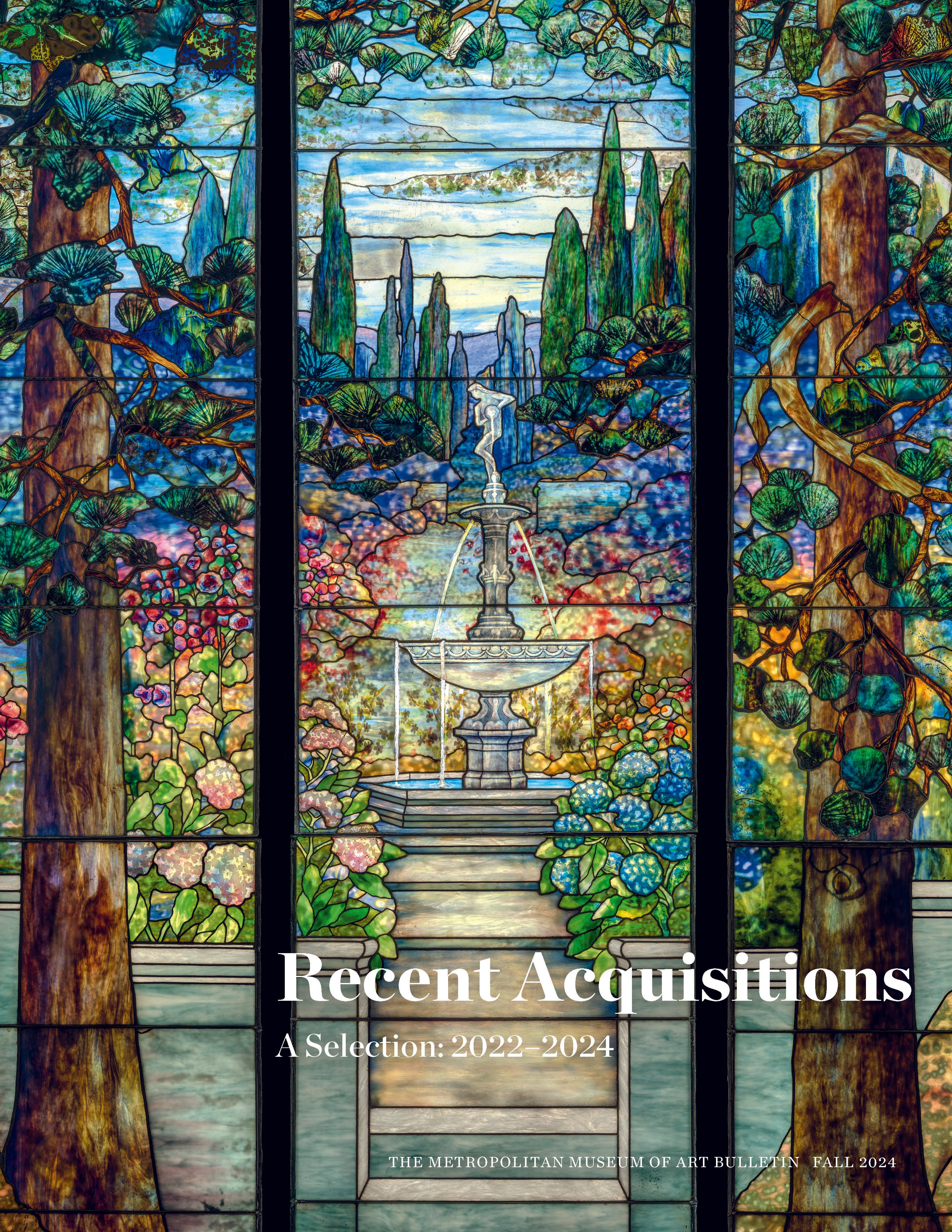Flintlock Longrifle
John Ennis made this contemporary American longrifle rifle in 1983 and unveiled it at the Western Kentucky University Gunmaking Seminar in Bowling Green, Kentucky that year, which he was attending as a student. Praised by the instructors and students for its free-spirited modern design, imaginative mixing of regional antique styles, and technical refinement, the gun helped earn Ennis a reputation as one of the premier longrifle makers of his generation. It is an excellent example of the continued evolution of the longrifle artform, which originated almost three hundred years ago in Pennsylvania, flourishing from the 1750s through around 1850 (see acc. nos. 42.22; 56.164.4; 2017.373; 2018.279a, b; 2018.568; 2018.630; 2020.72; 2020.262).
The gun features a unifying decorative theme, the Phoenix, depictions of which appear on the patchbox head, cheek inlay, and toe plate. While the rifle’s overall design is thoroughly modern, for its use of a unifying decorative theme, dramatically sharp, deep, tight carved scrolls, and illusionistic engraving, Ennis drew influence from a variety of eighteenth-century American longrifle schools and even specific makers, using them as points of departure for his imagination. For example, the rifle’s playfully engraved patchbox with a large figure at its head is a direct reference to the patchboxes of Jacob Kuntz (1780–1876) of Philadelphia (see 42.22; L.2020.22.2); the fluidity and confidence of the engraved mounts, and the firm embrace of out-of-the-box rococo flourishes as a central design element show a close study of the work of Henry Young (ca. 1775–ca. 1833) of Easton Township, Northampton County, Pennsylvania (see 2020.72); and the rifle’s emphasis on relief carving draws from York, Pennsylvania gunsmiths, who were famous for their carving skills (see 2018.630).
Another contemporary longrifle in the collection, made by Judson Brennan in 2018 (2022.31), has a more conservative design than Ennis’ fantastic and obviously modern approach. Intended as a modern meditation on the antique mode, Brennan’s rifle follows traditional decorative guidelines closely. Together the rifles showcase two very different ways in which modern artists can reinterpret eighteenth- and early nineteenth-century longrifle carving, engraving, and inlay motifs to make them their own.
The gun features a unifying decorative theme, the Phoenix, depictions of which appear on the patchbox head, cheek inlay, and toe plate. While the rifle’s overall design is thoroughly modern, for its use of a unifying decorative theme, dramatically sharp, deep, tight carved scrolls, and illusionistic engraving, Ennis drew influence from a variety of eighteenth-century American longrifle schools and even specific makers, using them as points of departure for his imagination. For example, the rifle’s playfully engraved patchbox with a large figure at its head is a direct reference to the patchboxes of Jacob Kuntz (1780–1876) of Philadelphia (see 42.22; L.2020.22.2); the fluidity and confidence of the engraved mounts, and the firm embrace of out-of-the-box rococo flourishes as a central design element show a close study of the work of Henry Young (ca. 1775–ca. 1833) of Easton Township, Northampton County, Pennsylvania (see 2020.72); and the rifle’s emphasis on relief carving draws from York, Pennsylvania gunsmiths, who were famous for their carving skills (see 2018.630).
Another contemporary longrifle in the collection, made by Judson Brennan in 2018 (2022.31), has a more conservative design than Ennis’ fantastic and obviously modern approach. Intended as a modern meditation on the antique mode, Brennan’s rifle follows traditional decorative guidelines closely. Together the rifles showcase two very different ways in which modern artists can reinterpret eighteenth- and early nineteenth-century longrifle carving, engraving, and inlay motifs to make them their own.
Artwork Details
- Title:Flintlock Longrifle
- Gunsmith:John C. Ennis III (American, b. 1947)
- Date:1982
- Geography:Boise, Idaho
- Culture:American, Council, Idaho
- Medium:Wood (maple), steel, silver, gold, brass
- Dimensions:L. 56 1/2 in. (143.5 cm); L. of barrel 40 3/16 in. (102.1 cm); Cal. 0.375 in. (10 mm); Wt. 10 lb. 15.1 oz. (4964 g)
- Classification:Firearms-Guns-Flintlock
- Credit Line:Purchase, Arthur Ochs Sulzberger Gift, 2023
- Object Number:2023.373
- Curatorial Department: Arms and Armor
More Artwork
Research Resources
The Met provides unparalleled resources for research and welcomes an international community of students and scholars. The Met's Open Access API is where creators and researchers can connect to the The Met collection. Open Access data and public domain images are available for unrestricted commercial and noncommercial use without permission or fee.
To request images under copyright and other restrictions, please use this Image Request form.
Feedback
We continue to research and examine historical and cultural context for objects in The Met collection. If you have comments or questions about this object record, please contact us using the form below. The Museum looks forward to receiving your comments.
